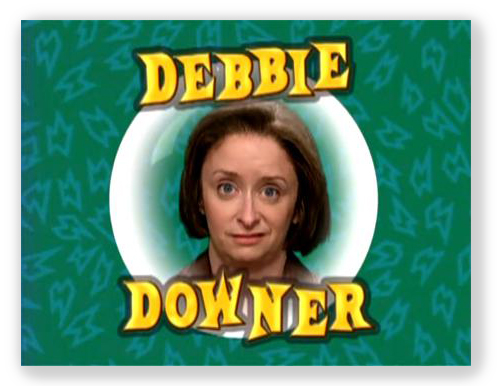We post news and comment on federal criminal justice issues, focused primarily on trial and post-conviction matters, legislative initiatives, and sentencing issues.

11TH CIRCUIT SPOILS THE COMPASSIONATE RELEASE PARTY
 You’d never invite the 11th Circuit to a party. Once again, the Debbie Downer of appellate courts has gone its own way, destroying most of the usefulness of compassionate release motions (aka sentence reduction motions under 18 USC § 3582(c)(1)(A)(i)) that all the other circuits take for granted.
You’d never invite the 11th Circuit to a party. Once again, the Debbie Downer of appellate courts has gone its own way, destroying most of the usefulness of compassionate release motions (aka sentence reduction motions under 18 USC § 3582(c)(1)(A)(i)) that all the other circuits take for granted.
Before last Friday, seven courts of appeal have held that USSG § 1B1.13 – the Guidelines policy statement on compassionate release – does not limit motions brought by prisoners. The Guideline – written well before the First Step Act allowed defendants themselves (instead of the BOP Director alone) to bring compassionate release motions – only allows compassionate release motions for a limited list of problems. Anything not on the list – such as the COVID risks for people with vulnerable medical conditions – must be approved by the BOP.
The BOP’s record of approving compassionate release motions is dismal. Between April and December 2020, the BOP approved 11 out of 10,940 inmate requests, which works out to one-tenth of 1%. The 2nd, 4th, 5th, 6th, 7th, 9th, and 10th Circuits have all agreed that § 1B1.13 – unamended since First Step passed – is not an “applicable policy statement” for compassionate release motions brought by prisoners, and will not be until the Sentencing Commission amends it to reflect current law.
 The consensus of those other circuits does not impress the 11th Circuit. Jim Bryant moved for compassionate release because First Step had cut the mandatory 25-year minimum for an 18 USC § 924(c) gun conviction because he received a higher sentence than some of his coconspirators, because he went to trial, and because he has a good prison rehabilitation record. Last week, the Circuit shot down his request because the BOP had not approved the basis for reduction.
The consensus of those other circuits does not impress the 11th Circuit. Jim Bryant moved for compassionate release because First Step had cut the mandatory 25-year minimum for an 18 USC § 924(c) gun conviction because he received a higher sentence than some of his coconspirators, because he went to trial, and because he has a good prison rehabilitation record. Last week, the Circuit shot down his request because the BOP had not approved the basis for reduction.
The 11th said, “Application Note 1(D) does not conflict with § 3582(c)(1)(A). The First Step Act’s only change was to allow for defendant-filed reduction motions. Nothing in Application Note 1(D) stops a defendant from filing a § 3582(c)(1)(A) motion. The BOP may still file motions, and Application Note 1(D) can apply to those motions. The BOP can also take a position on a defendant-filed motion, so Application Note 1(D) has a field of application there as well… Because this Court can give effect to the amended § 3582(c)(1)(A) and the unamended Application Note 1(D) at the same time, the Court must do so.”
The effect this ruling will have on compassionate release motions in the 11th Circuit can hardly be overstated. The stark circuit split created by this 2-1 decision may result in Supreme Court review, but inasmuch as a reconstituted Sentencing Commission – which President Biden intends to do – is likely to have § 1B1.13 amended by November 2022, the likelihood the Supreme Court will take up what is likely to be moot a few months after the case is decided is slim.
United States v. Bryant, Case No 19-14267, 2021 U.S.App. LEXIS 13663 (11th Cir., May 7, 2021)
– Thomas L. Root

